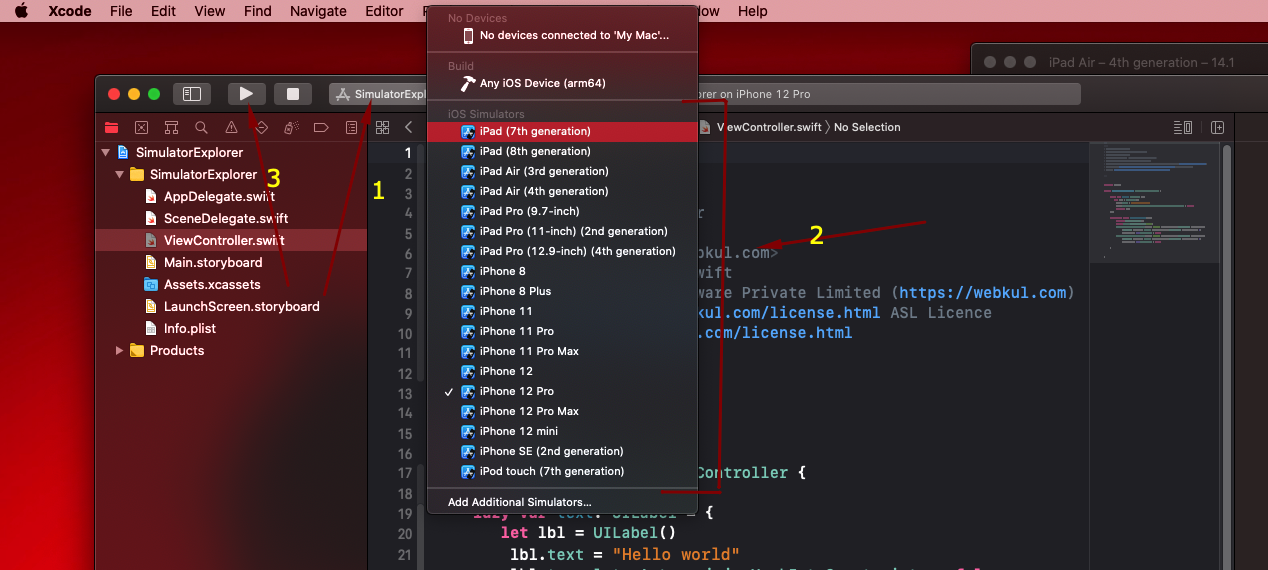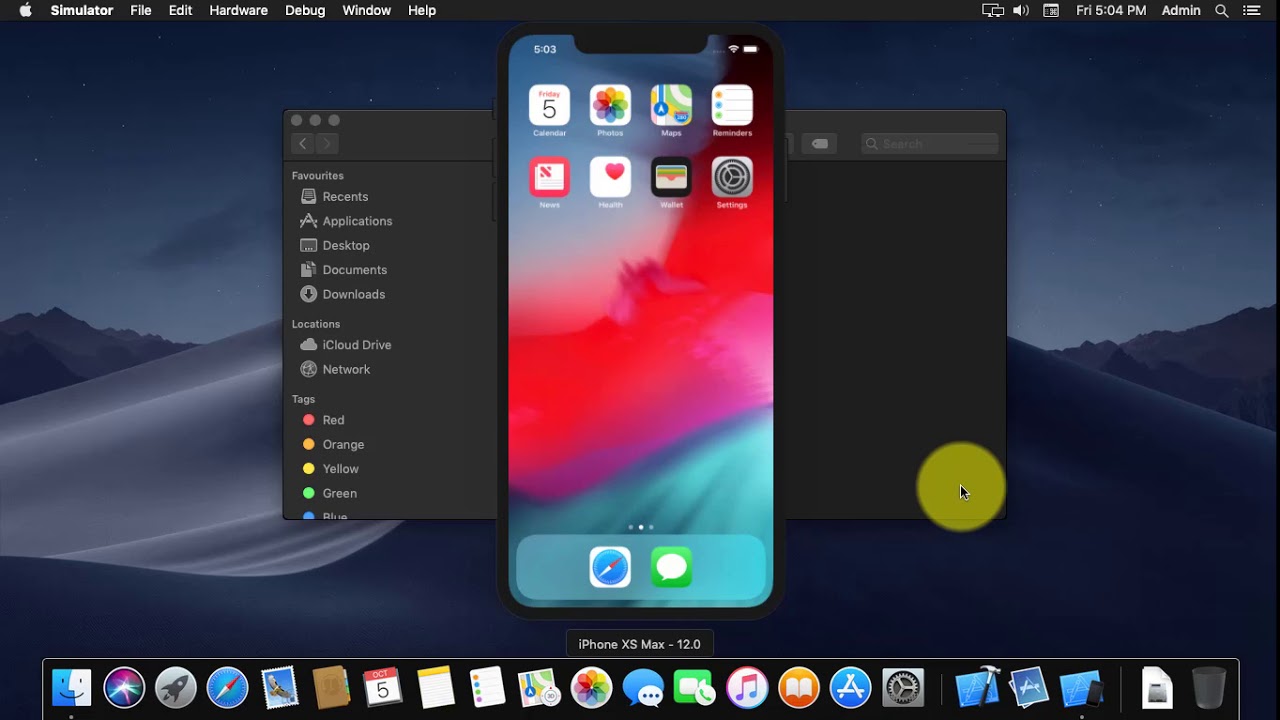Are you curious about how iPhone apps work? Do you want to test your app but don’t have an actual iPhone device at hand? Look no further than the iPhone Simulator! This powerful tool allows developers and users alike to explore the features and benefits of iOS apps without having to invest in a physical device. In this blog post, we’ll delve into everything you need to know about the iPhone Simulator – from its functionalities, advantages, and limitations – so that you can make informed decisions on how best to utilize this incredible software. So buckle up, because we’re embarking on an exciting journey through the fascinating world of mobile app development with Apple’s innovative technology!
What is iPhone Simulator?
An iPhone simulator is a software application that mimics the functionality and appearance of an iPhone. It allows users to test out apps or websites on a simulated iPhone interface, without having to use an actual physical device.
There are a number of different iPhone simulators available, each with its own set of features and benefits. Some simulators are designed for developers to test their apps on, while others are geared toward consumers who want to try out a new app before buying it.
Simulators can be very helpful in troubleshooting problems with apps or websites. They can also be used to get a feel for how an app or website will work on an iPhone before actually using it on a real device.
If you’re interested in trying out an iPhone simulator, there are a few different options available. iSwift is a popular option for developers, while AppetizeIO is geared more toward consumers. Both offer free trials, so you can try them out before committing to anything.
Features of iPhone Simulator
The iPhone Simulator is a great way to test out apps or games before buying an iPhone. It’s also a good way to check compatibility with existing apps. The simulator provides all the features of a real iPhone, except for the ability to place phone calls.
Here are some of the key features of the iPhone Simulator:
–The ability to run any app or game that is compatible with iOS 7.1
–A user interface that looks and feels like a real iPhone

How to use iPhone Simulator
Assuming you have already downloaded and installed Xcode from the Mac App Store, launch the program and create a new project. In the template selection window, choose iOS > Application > Single View Application and click Next. On the next page, name your project “iPhone Simulator” and select Swift as the programming language. Make sure the Use Core Data checkbox is not selected and click Next. Choose a location to save your project on your computer and click Create.
Now that you have created your project, it’s time to set up the iPhone simulator. Open up the Simulator by clicking on the icon in your dock or via Spotlight Search. Then, go to File > New Simulator. In the new window, select iOS as the operating system and choose the device you want to simulate (iPhone 6, iPhone 6 Plus, etc.). Click OK to finish setting up your simulator.
To test out your simulator, open up Main. storyboard in Xcode’s Project Navigator. This is where you will design your app’s user interface using Interface Builder. For now, just add a few basic UI elements like buttons and labels. Once you’re finished designing your app’s UI, run your project by clicking on the play button in Xcode’s toolbar or by pressing Command+R on your keyboard. Your app will launch in the simulator and you can interact with it just like a real iPhone!
Benefits of using iPhone Simulator
When it comes to mobile app development, the iPhone Simulator is a powerful tool that can save you time and money. By allowing you to test your app on a simulated iPhone device, you can avoid the need for expensive hardware and the hassle of dealing with physical devices.
There are many benefits to using the iPhone Simulator when developing mobile apps. Perhaps the most obvious benefit is that it allows you to test your app without having to purchase a physical device. This can be significant cost savings, especially if you are just starting out in app development and don’t have a large budget.
In addition to being cost-effective, the iPhone Simulator is also very convenient. It’s much easier to use than a physical device, and you can run it on your computer without having to worry about connecting to a network or dealing with other potential issues that can arise when using physical devices. The simulator also provides access to all of the features of the iOS operating system, so you can test your app against different versions of iOS and ensure compatibility.
Overall, the iPhone Simulator is an incredibly useful tool for mobile app developers. If you’re not already using it, we highly recommend giving it a try.
Alternatives to iPhone Simulator
When it comes to testing iOS applications, the iPhone Simulator is not the only option available. In fact, there are a number of alternatives that offer different features and benefits. Here is a look at some of the most popular options:
1. iPadian: This simulator offers a realistic interface that mimics the look and feel of an actual iPhone or iPad. It also includes a number of features that are not available on the iPhone Simulator, such as support for third-party app stores.
2. Appetize.io: This online simulator allows you to test your iOS apps directly in your web browser. It is simple to use and does not require any installation or setup.
3. TestFlight: This popular platform provides a way for developers to distribute beta versions of their apps to testers. It includes tools for managing feedback and crash reports.
4. Xamarin Test Cloud: This cloud-based service allows you to test your iOS apps on real devices, in addition to simulators. It also provides detailed reports on application performance and usage metrics.
Conclusion
The iPhone Simulator is an invaluable tool for anyone looking to explore the features and capabilities of their iOS device without actually owning one. With its realistic interface, it enables users to access all the same apps as they would on a real iPhone while allowing them to also test out some of the more advanced features like augmented reality. Whether you are a developer or just curious about what your new phone can do, using an iPhone simulator can be incredibly helpful in getting you up to speed with Apple’s latest technologies.



